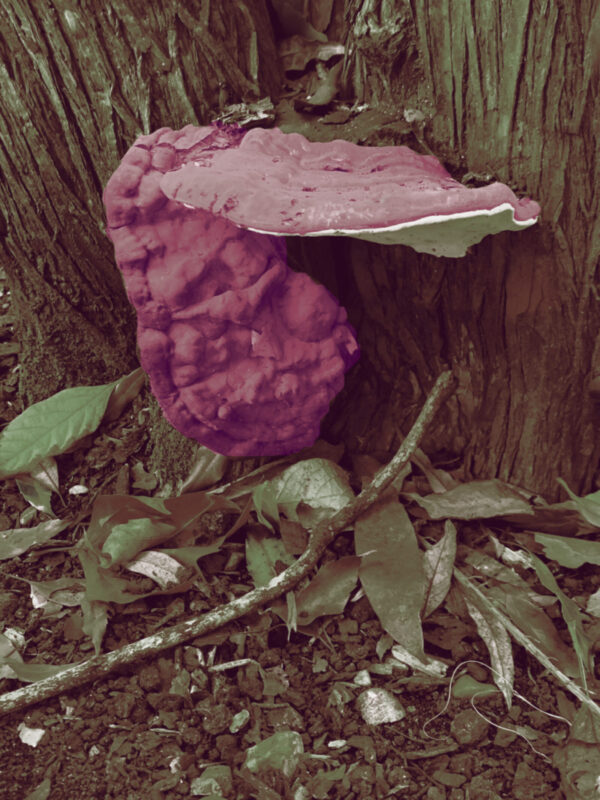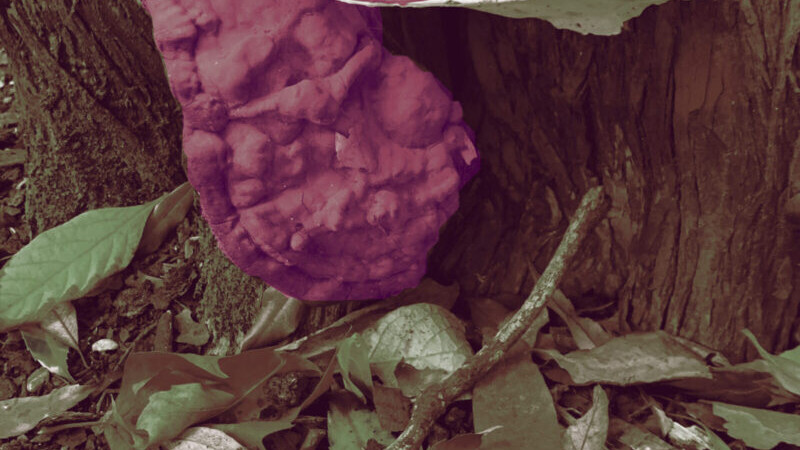Family: Ganodermataceae
Scientific Name: Ganoderma applanatum
Common Name: Artist’s bracket
Origin: Europe and parts of China
Growing on this buddleja tree stump is a mushroom. It is the fruiting body of the Ganoderma applanatum fungus, commonly known as artist’s bracket. It is called the artist’s bracket because it can be used to produce works of art, by making etchings on its underside.
Artist’s bracket is often found growing on wood and grows all around the world. It has a brown shelf or bracket, a white outer edge and underside, and no stalk. It has a leathery texture and can be very difficult to remove from the tree it’s attached to. The underside releases spores through pores.
Spores are a bit like seeds that are produced by plants. The spores contain the genetic information to produce a new generation of fungi. When released they will germinate and grow into new individuals under suitable conditions of moisture, temperature, and food availability.
The main part of the fungi is hidden within the tree and underground and is made up of mycelia. Mycelia are very fine thread-like structures.
Like plants, fungi can reproduce sexually or asexually. For most tree-decaying fungi like the artist’s bracket, they reproduce sexually through two spores growing mycelium in the same tree. These spores meet and mate. They produce a new mushroom, which releases a new generation of spores.
Fungi were once categorised as plants, but they are genetically more closely related to animals. They are now put in their own kingdom and are studied in the scientific field called mycology. In ‘The Science Underground: Mycology as a Queer Discipline’ the authors apply queer theory to the study of fungi.[1] There are several associations between queerness and fungi that can be found, including their marginalisation, difficulty to classify, and subversive nature. The fungi kingdom has historically been misunderstood and perceived as poisonous and diseased. However, fungi like artist’s bracket are vital to the environment. They break down dead material, transforming it into nutrients available again for plants in the soil.
[1] Kaishian P. & Djoulakian, H. (2020) ‘The Science Underground: Mycology as a Queer Discipline’, Catalyst: Feminism, Theory, Technoscience Issue 6 (Vol 2) . Available at: <https://www.researchgate.net/publication/341432466_The_Science_Underground_Mycology_as_a_Queer_Discipline> (Accessed: 20 October 2022)
Audio version read by Queer Botany founder, Sixto-Juan Zavala:


